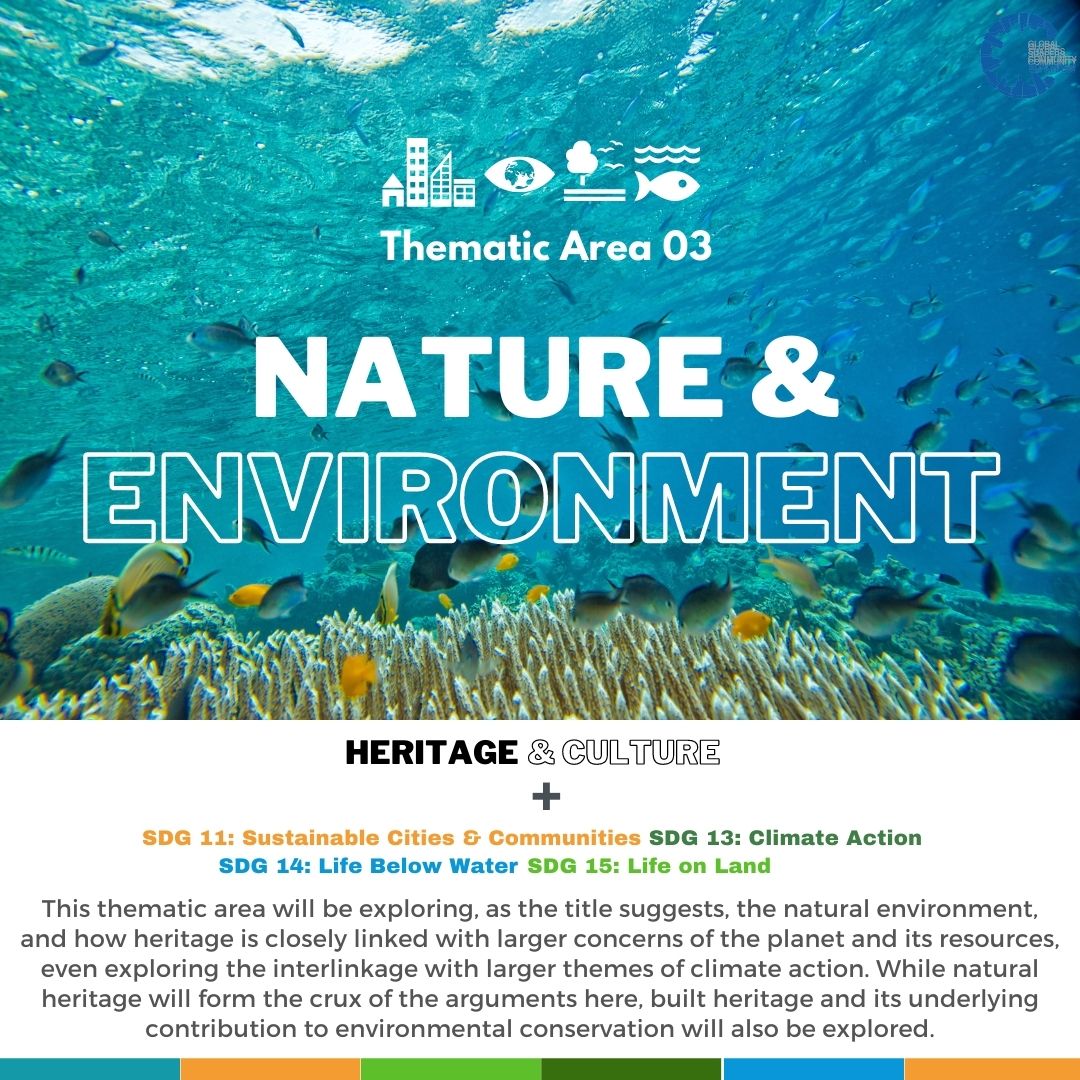
Heritage for Nature and Environment

When speaking of ‘heritage’, the first few things people think of are often monuments, landmarks, art, music or culture. While built heritage and intangible heritage are part of the heritage, and derived from human existence and civilisations, natural heritage is an important segment that comes under the umbrella term of ‘heritage’. While natural heritage, by definition, has a direct interlinkage to the conservation of nature and promotion of environmental sustainability, heritage in all forms definitely has direct and indirect linkages with, in the simplest terms, the protection of our planet.
With the impending threat of climate change, which has and will trigger unprecedented extreme weather events, heritage sites are exposed to a significant degree of risk. Despite these daunting risks which can be devastating to the world beyond heritage; heritage sites and associated heritage practices (such as conservation, legal restrictions to protect heritage etc.) can have many positive implications towards nature and the environment.
Heritage, as elucidated in a research by ICOMOS, can be excellent reservoirs of the past, bringing with them a lot of history, knowledge and experiences (in some cases, even ancient), making them extremely valuable assets for pathways to climate change adaptation and even climate change mitigation strategies. At the same time, natural heritage sites are often key in fighting natural and man-made disasters. In urban areas, the Blue-Green-Infrastrcture (BGI) is a crucial component in fighting climate risks, making cities livable and mitigating climate impacts.
In addition to this, given that heritage sites are often tourist sites – where different communities meet, they can stimulate interactions and exchange of knowledge around environmental conservation, protecting nature and biodiversity, among other avenues towards positive impacts on nature and the environment. Heritage sites are often legally protected from having any anthropogenic activities around them, like construction and urbanisation, such as the sites in Hampi, automatically making them viable spaces for safeguarding the natural environment, and those which inhabit it, linking them to SDG 14 and 15 (Life on Land & Water). The World Heritage Marine Programme which began in 2005 is a welcome step towards protecting marine heritage as well, while heritage sites like national parks protect wildlife on land.
Archaeological data derived from heritage sites are also often an effective way for the scientific community to understand climate change better. This is helpful for responsive strategies, along with local knowledge preserved by people and communities around heritage sites, which, as mentioned, can be leveraged for adaptation and mitigation. Some heritage sites, which have been retrofitted for modern use are also a great example of mitigating GHG emissions associated with new construction, and climate action plans can effectively be enhanced well if heritage and associated elements are utilised properly, keeping the nature, environment, wildlife and the planet at large, at the centre stage of conservation activities.
References:
- Heritage and the sustainable development goals: policy guidance for heritage and development actors, prepared by Prepared by the Sustainable Development Goals Working Group – Priority Action 1 Task Team, and published by International Council on Monuments and Sites – ICOMOS, Source Link: https://openarchive.icomos.org/id/eprint/2453/
- The Contribution of World Heritage to Sustainable Development, UNESCO. Source Link: https://whc.unesco.org/en/sustainabledevelopment/


